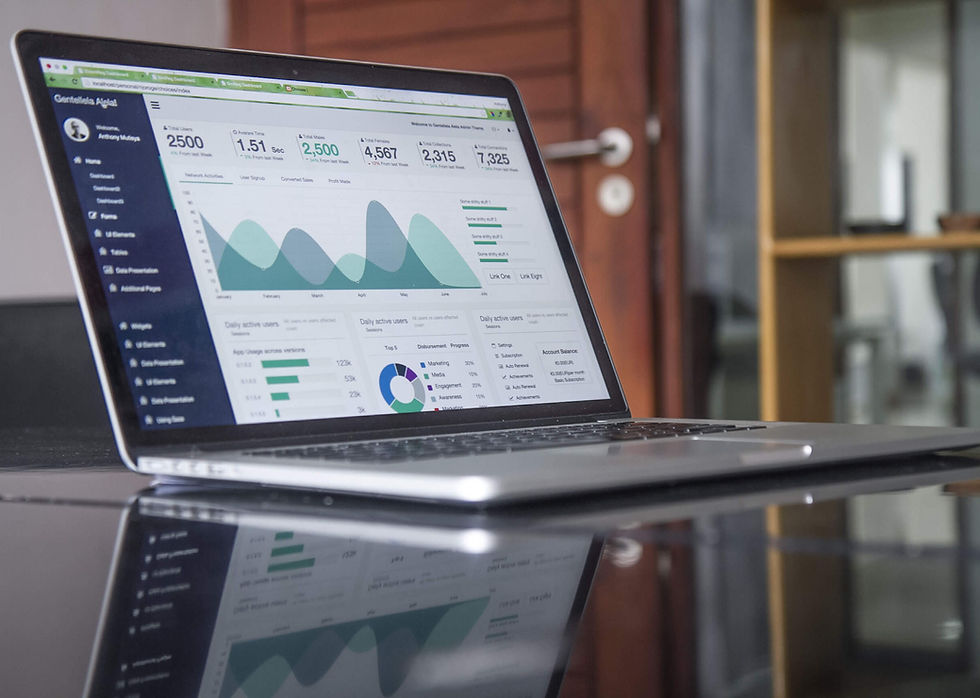Building Tomorrow: The Transformative Impact of AI on Construction Industry Safety
- Apr 8, 2024
- 3 min read

The construction industry, with its towering structures and intricate projects, is entering a new era of innovation. Artificial Intelligence (AI), once confined to the realms of science fiction, is now poised to revolutionise safety practices in construction. In this blog post, we explore the multifaceted ways in which AI is set to improve safety, ushering in a new standard for construction site risk management.
1. Predictive Analytics for Hazard Identification
AI-powered predictive analytics have the capacity to foresee potential hazards before they escalate. By analysing historical data, environmental conditions, and project-specific variables, AI algorithms can identify patterns that may indicate an increased risk of accidents. This proactive approach allows construction teams to implement preventive measures and mitigate risks before they materialize.
2. Smart Personal Protective Equipment (PPE)
The integration of AI into PPE enhances safety on construction sites. Smart helmets and vests equipped with AI sensors can monitor vital signs, detect environmental hazards, and issue real-time alerts. This not only ensures the well-being of individual workers but also contributes to a rapid response in the event of an emergency.
3. Autonomous Vehicles and Equipment
AI-powered autonomous vehicles and equipment are reshaping the landscape of construction operations. These machines can navigate construction sites with precision, reducing the risk of accidents caused by human error. The incorporation of AI ensures that these autonomous entities can adapt to dynamic environments, enhancing overall site safety.
4. Real-Time Monitoring and Surveillance
AI-driven surveillance systems provide real-time monitoring of construction sites. Advanced cameras and sensors can detect unsafe behaviour, potential hazards, and compliance with safety protocols. This constant vigilance enables immediate corrective action and fosters a culture of accountability among workers.
5. Intelligent Site Planning and Design
AI plays a pivotal role in optimising construction site planning and design for safety. By analysing data on historical incidents, traffic patterns, and site conditions, AI algorithms can propose site layouts that minimise risks. This forward-looking approach ensures that safety considerations are embedded in the very fabric of construction projects.
6. Robotics for Dangerous Tasks
Robotic systems powered by AI can be deployed for hazardous tasks, reducing the exposure of human workers to potential risks. Drones and robotic arms equipped with AI capabilities can perform tasks such as inspections, maintenance, and material handling in environments where safety concerns would traditionally limit human involvement.
7. Virtual Reality (VR) Training Simulations
AI-driven virtual reality simulations are transforming safety training in the construction industry. Workers can undergo realistic simulations of potential job site scenarios, allowing them to practice emergency responses and safety protocols in a controlled virtual environment. This immersive training enhances preparedness and reduces the likelihood of accidents.
8. Dynamic Risk Assessment
AI enables dynamic risk assessment by continuously analysing data from construction sites. As conditions change, AI algorithms can adapt risk assessments in real-time, ensuring that safety measures remain aligned with the evolving nature of construction projects.
Benefits of AI in Construction Safety
Reduction in Accidents: AI's predictive capabilities contribute to a significant reduction in accidents, creating safer working environments.
Efficiency and Productivity: Autonomous vehicles and equipment enhance efficiency by reducing downtime and increasing productivity, all while maintaining a strong focus on safety.
Cost Savings: The proactive identification of risks and preventive measures can lead to substantial cost savings by minimising the impact of accidents on project timelines and budgets.
Improved Compliance: Real-time monitoring and intelligent site planning contribute to better compliance with safety regulations, reducing the risk of legal issues.
Challenges to Address
Integration Complexity: Implementing AI technologies requires careful integration with existing systems, which can be complex and necessitate specialised expertise.
Workforce Adoption: Ensuring that construction workers are comfortable and proficient with AI technologies requires comprehensive training programs and change management strategies.
Data Security: The vast amounts of data generated by AI systems necessitate robust cyber security measures to protect sensitive information.
The advent of AI in the construction industry is a transformative leap toward enhanced safety and efficiency. As AI technologies continue to evolve, construction sites will become not just marvels of engineering but also beacons of innovation in risk management. The synergy between human expertise and AI capabilities is poised to redefine the very essence of construction safety, ensuring a future where groundbreaking projects are built on a foundation of unparalleled safety standards. The construction industry is not just building structures; it's building a safer tomorrow.




Comments